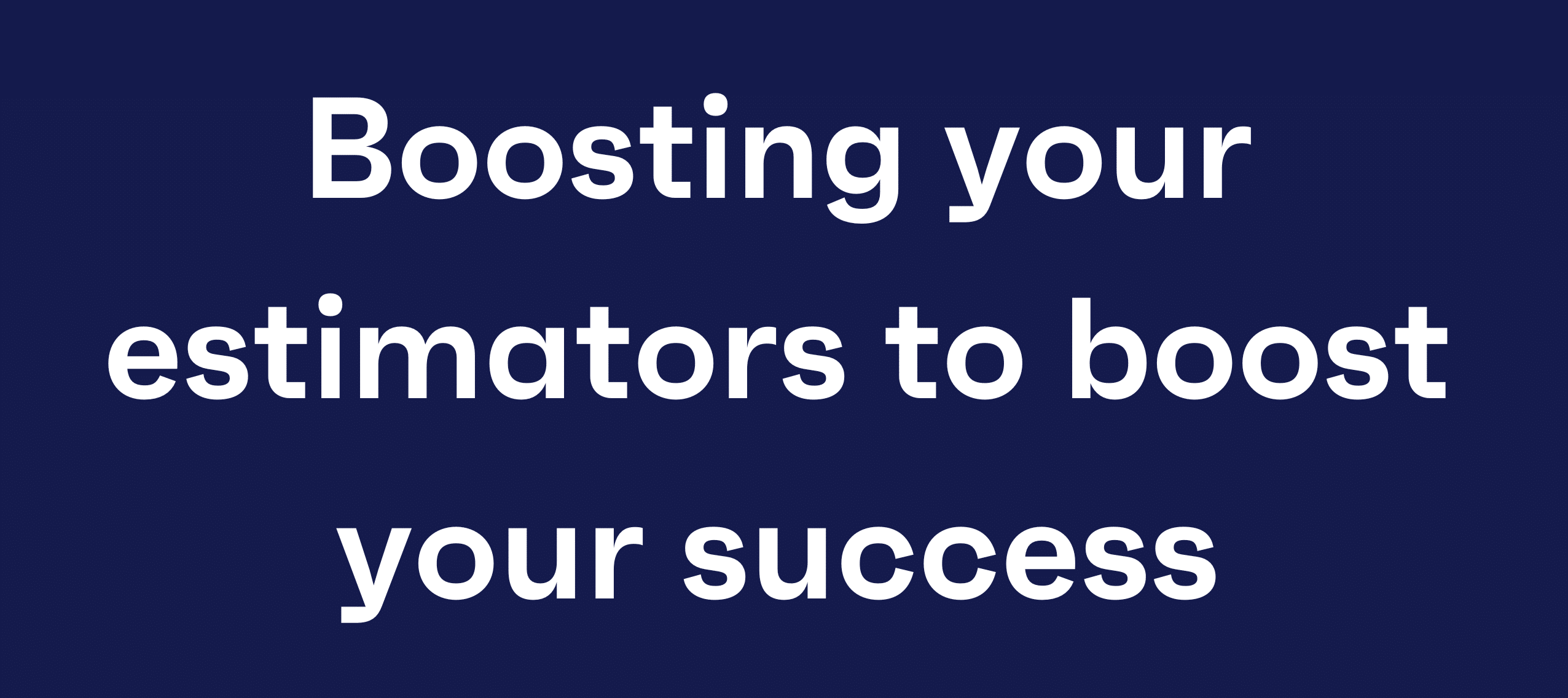Boosting your estimators to boost your success


In today’s competitive construction industry, the role of estimators holds huge significance, influencing approximately 80% of a project’s margin even before the actual construction begins. Estimators face daunting challenges due to a tight labor market, persistent supply chain issues, and a high rate of insolvency among construction companies.
Estimators as risk navigators
Estimators and their teams are tasked with navigating these risks. Poor estimation processes can jeopardize business sustainability by either leading to unsuccessful tenders or a surplus of tenders with unsustainable margins. Additionally, making poor subcontractor selections, whether through subpar quotes or partnering with underqualified parties, can result in costly defects down the line. Estimators are on the front lines of managing these challenges, and addressing them head-on can set a business apart from the competition.
Leveraging data for success
To succeed in this environment, businesses must harness data and engagement. At EstimateOne, we’ve collected data that highlights the correlation between higher engagement rates and increased tender success.

But how do you improve engagement?
Expanding your subbie network
The data suggest that subbie supply chains have dwindled over the past few years. To overcome this challenge, consider two key strategies:
Evaluating past performance
One of the best ways to anticipate future performance is by evaluating past performance. For new subcontractors, it’s essential to assess their qualifications and project history. With your existing network, you have the opportunity to not only choose the most qualified subcontractors but also those known for their quality and support, fostering repeat quotes and a smoother procurement stage.
As the industry faces unprecedented challenges – challenges that are unlikely to lessen at any point in the foreseeable future – businesses that prioritise the role of estimators are likely to stand out from the competition and thrive in this evolving landscape.
EstimateOne drastically streamlines the processes of tendering and building subcontractor networks. To get an in-depth look at EstimateOne, book a demo today.